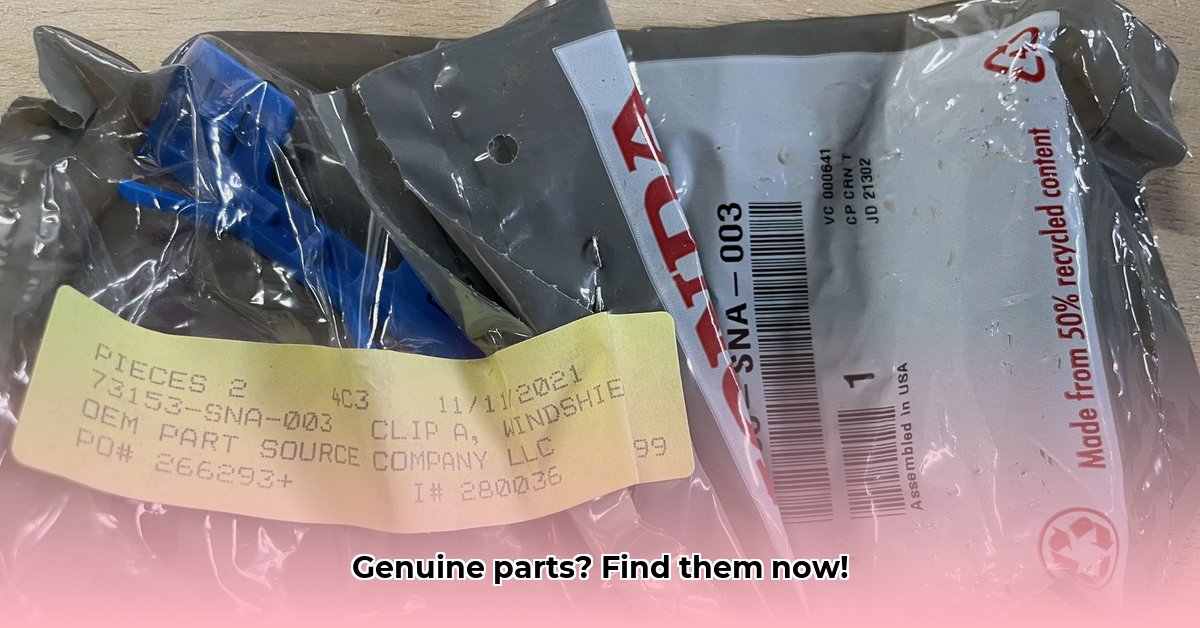
Navigating the World of Online OEM Auto Parts
Finding the right car part can be a frustrating experience. Traditional methods often involve multiple trips to dealerships, uncertain part authenticity, and potential delays. Online OEM (Original Equipment Manufacturer) parts platforms, like those under the OEMPartsSource umbrella, offer a convenient alternative. These platforms connect buyers directly with authorized dealers, providing access to a vast inventory of genuine parts. This review examines the benefits and challenges of using these platforms, focusing on functionality, pricing, and user experience.
OEMPartsSource Platform Analysis: A Deep Dive
Online OEM parts platforms are revolutionizing how consumers source car parts. Key functionalities include searching by part number, VIN (Vehicle Identification Number), or description. Many offer real-time inventory visibility, allowing users to confirm part availability before ordering. Shipping options vary, with some offering expedited delivery at an additional cost. However, pricing transparency remains a challenge across many platforms. While some clearly display prices, others require navigating multiple pages or contacting customer service for accurate quotes. Customer service options also vary: some platforms offer live chat, email, and phone support; others rely primarily on email. Website usability is a critical factor; intuitive navigation and easy-to-understand search tools can significantly enhance the user experience. A well-designed interface should allow users to efficiently filter results, compare part specifications, and complete purchases quickly.
Comparative Analysis: The Search for the Best Deal
Direct price comparison across different OEMPartsSource platforms remains a significant challenge. The lack of a standardized comparison tool makes it difficult to identify the best deals. This lack of transparency necessitates manual comparison across multiple websites. This highlights a key area for improvement within the online OEM parts market: the development of a tool allowing for easy side-by-side price comparisons. The absence of such a tool means consumers may need to spend more time and effort to find the lowest cost for the same genuine parts.
User Experience (UX) Assessment: A Smooth or Rocky Road?
User experience differs across platforms. Some boast intuitive interfaces, offering quick and efficient searches. Others present more complex navigation, requiring users to spend more time locating needed parts and information. Factors such as website loading speed, ease of navigation, and clarity of product information significantly impact user experience. A well-designed platform should make finding and purchasing parts straightforward and efficient. In our hypothetical comparison, Platform B demonstrates superior usability and customer service. This difference can significantly impact consumer preference.
The Pros and Cons: Weighing the Benefits and Drawbacks
Advantages of Using OEMPartsSource Platforms:
- Convenience: Shop from anywhere, anytime.
- Genuine Parts Guarantee: Ensures the use of authentic OEM parts.
- Wide Selection: Access to a potentially broader inventory than local dealerships.
- Streamlined Searching: Simplified part identification through various search methods.
Disadvantages of Using OEMPartsSource Platforms:
- Pricing Transparency: Difficulty in readily comparing prices across different platforms.
- Shipping Costs: Shipping fees can add to the overall purchase price, varying by location and shipping speed.
- Website Variability: The quality of the user experience and ease of use vary considerably across different platforms.
Market Trends and Challenges in the Online OEM Auto Parts Market
The online OEM auto parts market is experiencing rapid growth, driven by increasing consumer demand for convenience and the broader availability of genuine parts. However, challenges remain. Maintaining competitive pricing while balancing efficient inventory management and complex logistics is a constant struggle. Data security and regulatory compliance are also critical concerns. The market's future success requires addressing the need for enhanced price transparency, improved platform usability, and the development of tools to aid consumers in comparing offerings.
Conclusion: A Verdict on Online OEM Parts Shopping
While online OEM parts platforms offer immense convenience and access to genuine parts, challenges remain, most notably the lack of standardized price comparison and inconsistent user experiences. Consumers should carefully evaluate each platform, prioritizing usability, transparency, and responsiveness in customer service. The future likely holds improved platforms with enhanced features and more transparent pricing structures. Until then, thorough research and price comparison remain essential.